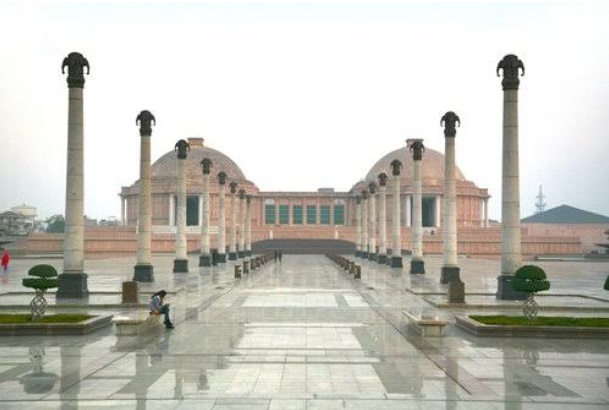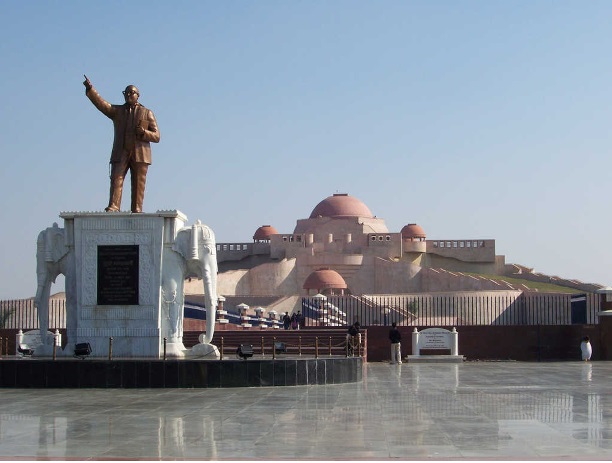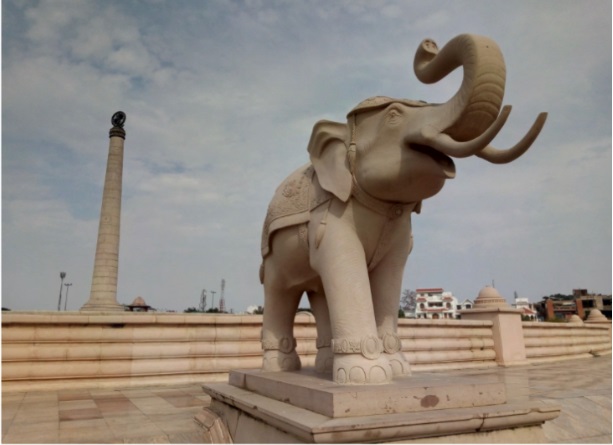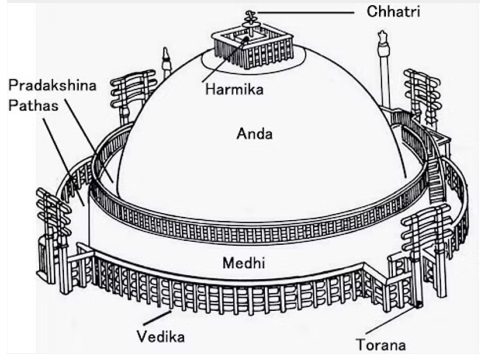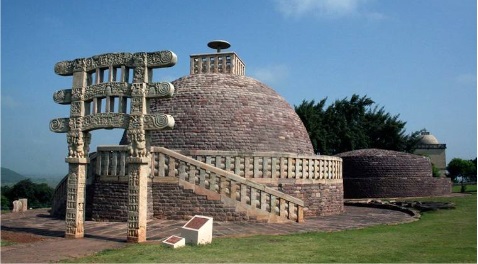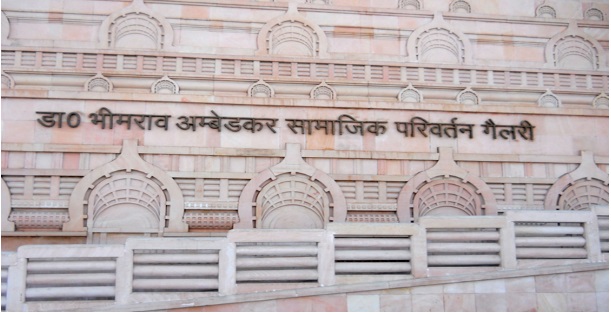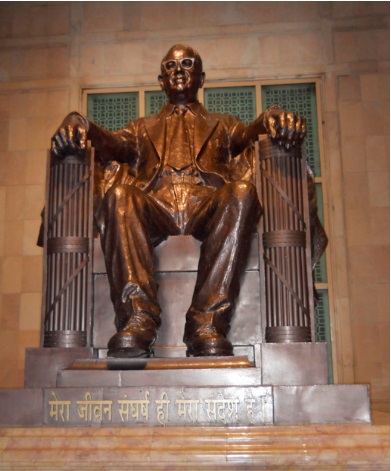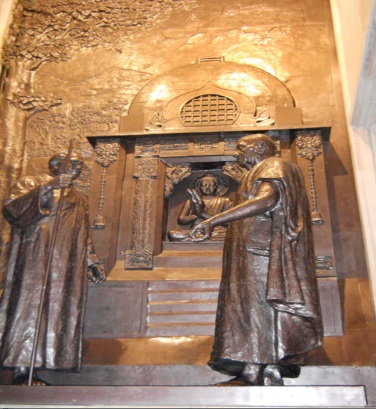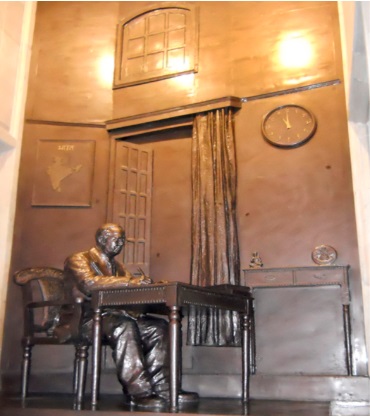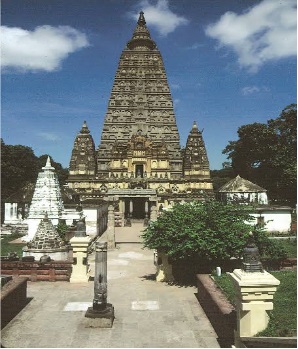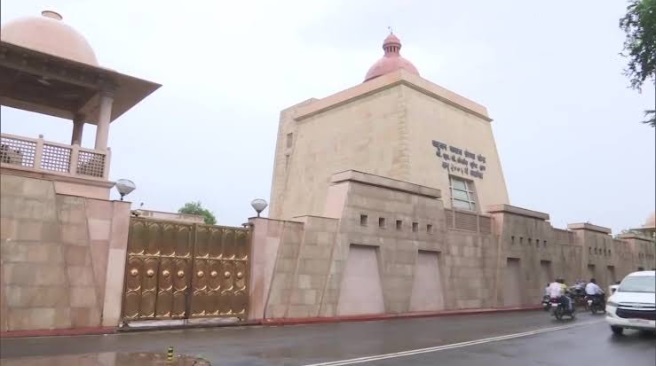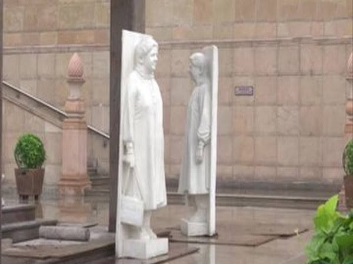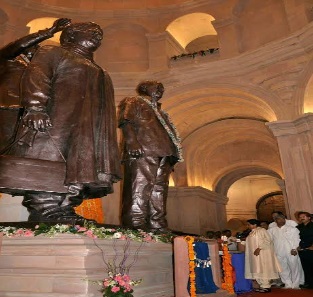In 2002, the founder of the Bahujan Samaj Party, Kanshi Ram, announced his intentions to convert to Buddhism on 14th October 2006, the 50th anniversary of Ambedkar’s conversion at Nagpur. But on 9th October 2006, the charismatic Dalit leader died at his official residence in New Delhi after a long history of health complications. After much drama around his last rites, his political heir Mayawati lights up his pyre. His funeral rites were performed per Buddhist tradition, and his ashes were collected not to be diffused into a river as per his wish.
Mayawati, who formed the government in U.P. in 2007 and before for shorter periods, amassed the vision of Kanshi Ram after his death and magnified Dalit presence in the space-time of Lucknow by working on two mega architectural projects: Dr B.R. Ambedkar Samajik Parivartan Prateek Sthal and Bahujan Samaj Prerna Kendra. The larger-than-life scale of this architecture cost Mayawati more than 700 Crore. Consequently, today Ambedkar statues are more salient to the city space of Lucknow than Gandhi statues.
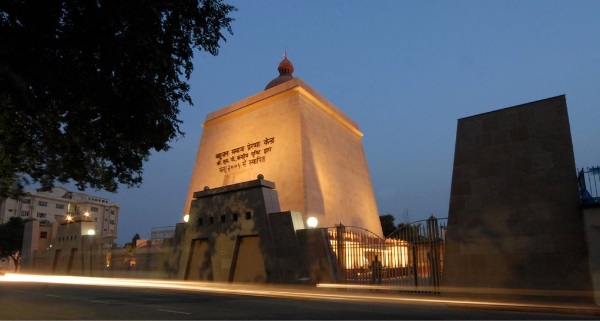
Mayawati’s ‘Architectural Lighthouses’ for Dalit Mobilisation
Androgynous Mayawati entered active politics in the 1980s. Like other female politicians of the time (Ex: Jayalalita, Sushma Swaraj), her simple salwar suit and boy-cut look made her supposedly less feminine and more dedicated towards masculine Indian politics. But her gains in Dalit politics could only be made if she could establish strong associations with the Dalit community and its history of resistance. Mayawati was thus yet to prove her legitimacy by becoming the rightful political heir of Kanshi Ram and, subsequently, Baba Saheb.
For this purpose, an assembly of elements of Buddhism with the cult popularity of Ambedkar-Kanshi Ram was a sweet spot to hit.
In 2003, Mayawati sanctioned the making of what Melia Belli, in her essay ‘Monumental Pride: Mayawati’s Memorials in Lucknow’ metaphorically describes as ‘two architectural lighthouses’ (Ambedkar Memorial and Prerna Sthal) from where political mobilisation of Dalits, from rallies, celebrations, protests to important community meetings could take place with Mayawati becoming the rightful leader, of the Dalits.
For this project, Mayawati hired Jay Kaktikar, a designer-architect, who used light-pink and red sandstone from Karauli (Rajasthan) along with buff-coloured sandstone from Chunar (U.P.) to provide durability, grandeur and royal look; and Anil Sutar, a Padma Shri artist working alongside his son Ram Sutar, who together incorporated thicker slabs of bronze to provide official statement and realism in relief arts. This was also done so that these sculptures of Dalit representation were not subject to the visual history erasure in Lucknow by different governments.
The 1950s saw the first sculptors of Ambedkar in public spaces, starting from the burst statue of Baba Saheb in Kolhapur and then in the old Parliament in Delhi. These sculptors portrayed Ambedkar wearing suit-ties and glasses. The Delhi statue depicts Ambedkar standing with his right index finger raised and the left hand carrying a constitution. This iconology was taken further in several other statues of Ambedkar across the globe and in Mayawati’s architectural projects too.
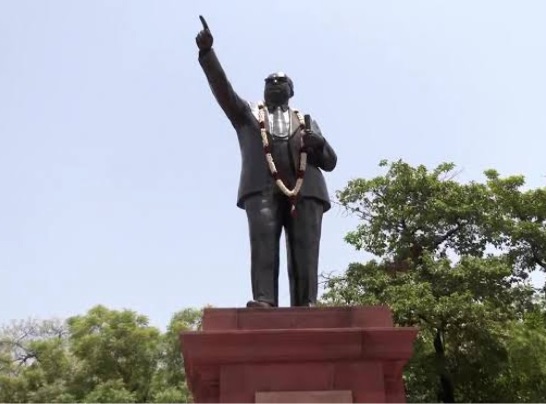
The Buddhist Borrowings: Architecture of Ambedkar Memorial and Prerna Kendra
The architecture of Ambedkar Memorial (Dr B.R. Ambedkar Samajik Parivartan Prateek Sthal) and Prerna Kendra (Bahujan Samaj Prerna Kendra) is greatly inspired by ancient Buddhist architecture like the Sanchi Stupa (1st Cen. BCE). However, Kaktikar also borrowed selected features from historically notable Indian official and royal buildings to give a modern-day bureaucratic look. Thus, there were no intentions to build replicas of any historical Buddhist Indian monument; instead, features were selectively borrowed from Buddhist architecture to associate Buddhism taken up by Ambedkar in his later life with the history of the Dalit community and ultimately with Mayawati. Religion, in other words, gave way to the political unity of the Dalit community, as envisioned by a Female Dalit leader, Mayawati.
Pillars: Chunar pillars designed by Kaktikar in Ambedkar Memorial resemble the Ashokan pillars with inverted lotus and bronze capital with a wheel borne on the backs of elephants. Besides being BSP’s party symbol, the ‘elephant’ was used as the royal symbol in the courts of one of the greatest patrons of Buddhism, Ashoka. However, Mayawati’s pillars are more unadorned, taller and in groups—life-size stone sculptors of Elephants garland the 108-acre land.
